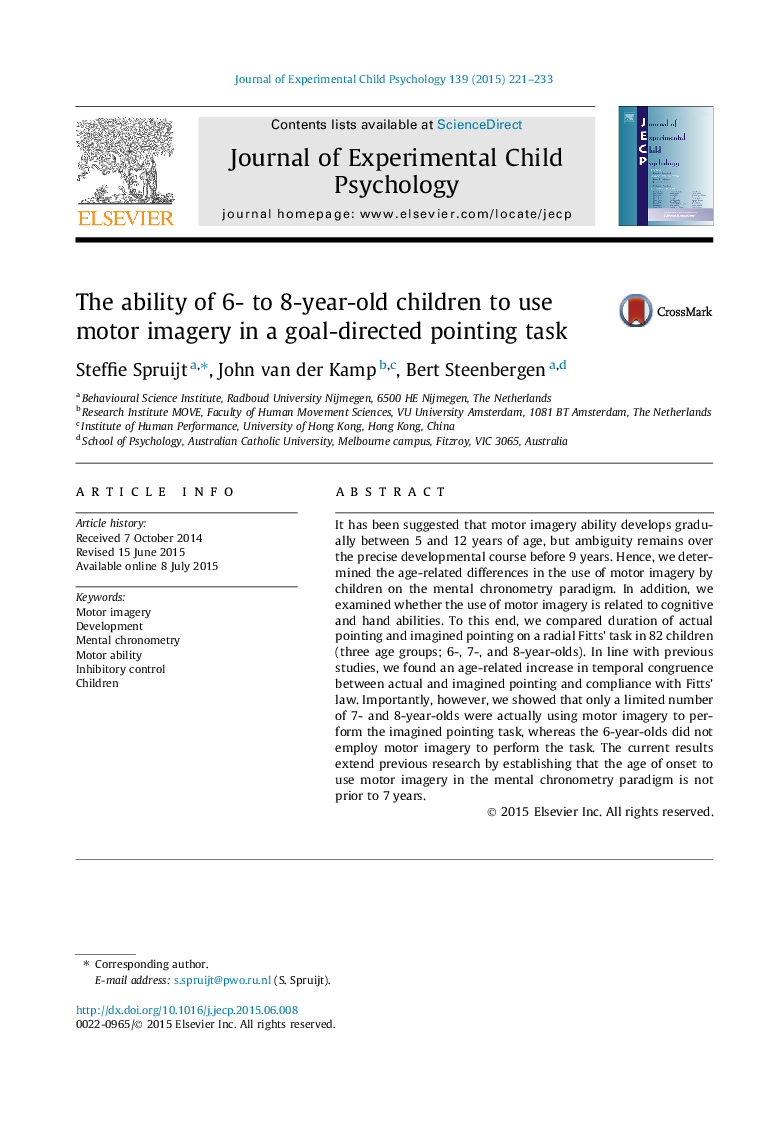| Article ID | Journal | Published Year | Pages | File Type |
|---|---|---|---|---|
| 917959 | Journal of Experimental Child Psychology | 2015 | 13 Pages |
•Significant temporal congruence and compliance with Fitts’ law indicate motor imagery.•Motor imagery ability is related to inhibitory control.•The use of motor imagery on the mental chronometry paradigm emerges around 7-8 years of age.•The Fitts’ task is indicated to be a conservative measure of motor imagery.
It has been suggested that motor imagery ability develops gradually between 5 and 12 years of age, but ambiguity remains over the precise developmental course before 9 years. Hence, we determined the age-related differences in the use of motor imagery by children on the mental chronometry paradigm. In addition, we examined whether the use of motor imagery is related to cognitive and hand abilities. To this end, we compared duration of actual pointing and imagined pointing on a radial Fitts’ task in 82 children (three age groups; 6-, 7-, and 8-year-olds). In line with previous studies, we found an age-related increase in temporal congruence between actual and imagined pointing and compliance with Fitts’ law. Importantly, however, we showed that only a limited number of 7- and 8-year-olds were actually using motor imagery to perform the imagined pointing task, whereas the 6-year-olds did not employ motor imagery to perform the task. The current results extend previous research by establishing that the age of onset to use motor imagery in the mental chronometry paradigm is not prior to 7 years.
